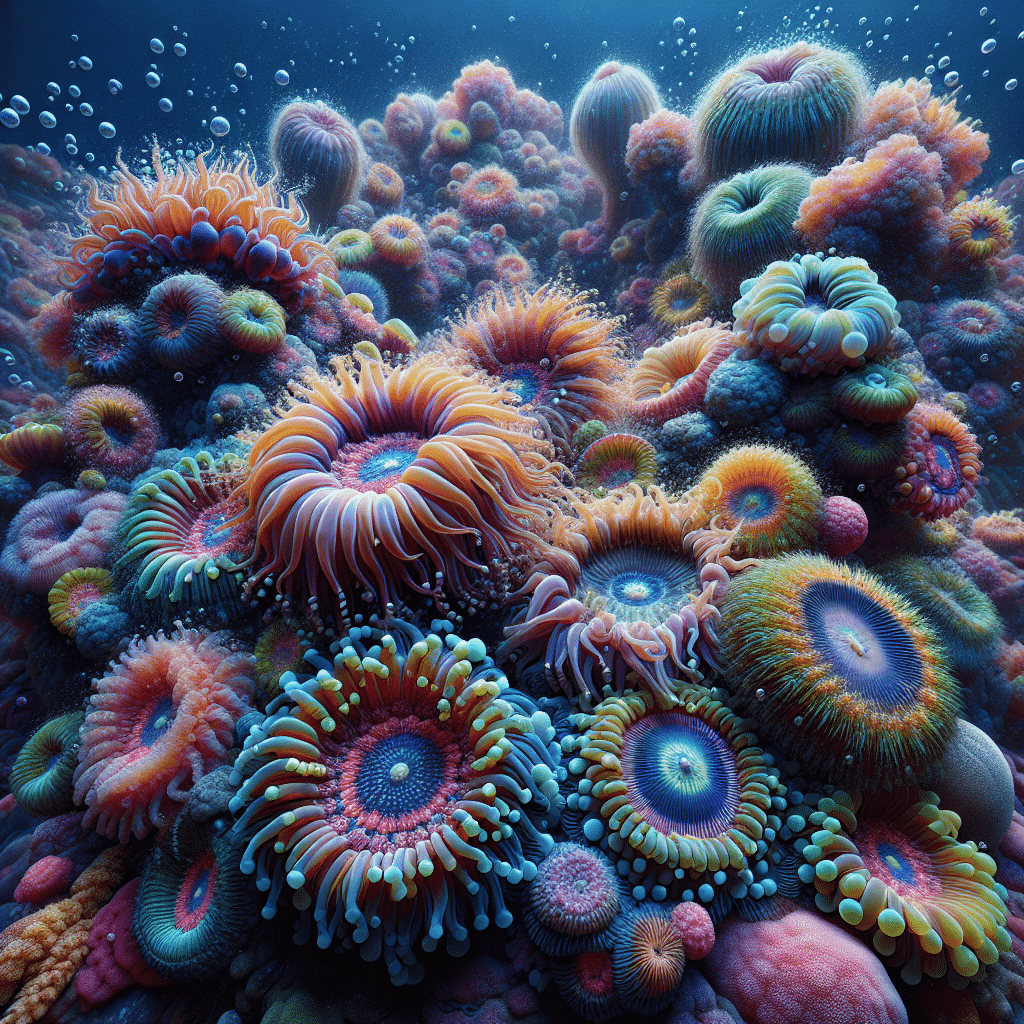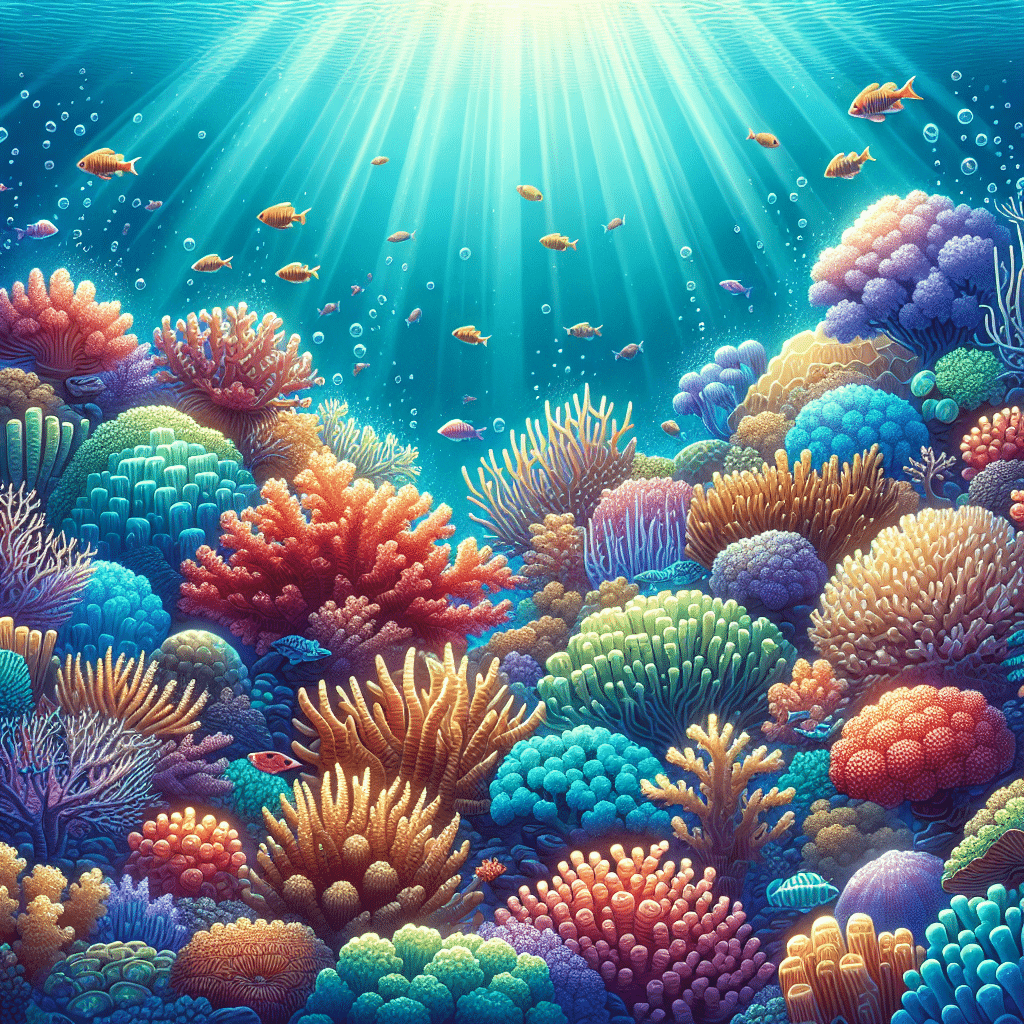Exploring Zoanthids
Introduction to Zoanthids
I’ve always been fascinated by zoanthids, those vibrant and colorful corals that add so much life to a reef tank. They belong to a group called Zoantharians and are known for their stunning appearances and unique features. These corals form mutualistic relationships with dinoflagellate micro-algae, similar to how other reef-building corals operate. This relationship allows them to thrive in various environments while providing a splash of color that can brighten any aquarium.
Zoanthids are not just beautiful; they have a remarkable ability to colonize quickly, making them a popular choice among hobbyists. They come in various colors, including bright yellows, oranges, and deep blues, which can create a stunning visual display in any reef setup (Reefco Aquariums).
Natural Habitat of Zoanthids
In their natural environment, zoanthids can be found in diverse habitats, from shallow to deep waters. For instance, I’ve read about zoanthids in Maui, Hawaii, where they thrive among reefs, showcasing a palette of greens, pinks, and yellows. They often inhabit sandy substrates and incorporate sand and other materials into their colonies to provide structural support (Smithsonian’s National Zoo).
Here’s a quick look at their preferred habitats:
| Habitat Type | Depth Range | Characteristics |
|---|---|---|
| Shallow Reef | 0-30 m | Bright colors, high light exposure |
| Deep Reef | 30-100 m | More subdued colors, less light |
| Substrate | Varies | Incorporates sand for structure |
Understanding where zoanthids thrive in the wild can help me replicate their needs in my own tank. This knowledge is key to ensuring that they remain happy and healthy in my reef aquarium.
Characteristics of Zoanthids
Physical Features of Zoanthids
Zoanthids are fascinating creatures that I find captivating for their unique physical traits. They have long, prominent tentacles arranged in two rows, which give them a distinct appearance. These polyps can exist as individual organisms or form colonial groups, creating beautiful displays in a reef tank. The vibrant colors of zoanthids are another standout feature; they come in various shades, including bright yellows, oranges, deep ocean blues, and stunning purples. This variety makes them a popular choice for aquarists looking to add a splash of color to their tanks. For more information on coral varieties, check out our section on corals.
| Feature | Description |
|---|---|
| Tentacle Arrangement | Long, prominent, in two rows |
| Lifestyle | Individual or colonial groups |
| Color Variety | Bright yellows, oranges, blues, purples |
Classification of Zoanthids
In terms of classification, zoanthids fall under the order Zoantharia, which includes various genera such as Palythoa and Zoanthus. They belong to the subclass Zoantharia, which encompasses a range of species. Identifying specific species can sometimes be tricky due to hybridization among different types of zoanthids. Here’s a brief look at the genera I often encounter:
| Genus | Description |
|---|---|
| Zoanthus | Known for vibrant colors and rapid growth. |
| Palythoa | Often found in a variety of habitats. |
| Parazoanthus | Typically has unique adaptations to environments. |
| Protopalythoa | Features distinctive coloration and growth patterns. |
Understanding their classification can be helpful when selecting zoanthids for my reef tank. They are not only visually appealing but also play a significant role in maintaining a healthy aquarium ecosystem. If you’re interested in more coral types, feel free to explore sections on xenia or brain coral.
Varieties of Zoanthids
When it comes to keeping zoanthids in my reef tank, I find that understanding the different species and their color variations is essential. This not only enhances the beauty of my aquarium but also helps me provide the best care for them.
Common Zoanthid Species
There are several species of zoanthids that are commonly kept in aquariums. Some of my favorites include:
| Species Name | Common Name | Description |
|---|---|---|
| Z. sansibaricus | Zanzibar Zoanthid | Known for its vibrant color variations. |
| Z. sociatus | Sociatus Zoanthid | Popular for its diverse color morphology. |
| Palythoa sp. “singapura” | Nuclear Green | A striking species noted for its bright green color. |
| Z. pulchellus | Armor of God | A fan favorite with a unique color pattern. |
These species not only bring stunning aesthetics to my reef tank but also thrive under the right conditions. For example, Z. sansibaricus from Okinawa exhibits an extraordinary amount of variation in color morphology, making it a captivating choice for any aquarist.
Color Morphology of Zoanthids
One of the most exciting aspects of keeping zoanthids is their incredible color morphology. They come in a wide range of colors, from bright yellows and oranges to deep blues and purples. This variety allows me to create a vibrant and diverse ecosystem in my tank.
Some notable examples of color varieties include:
- Nuclear Green Palythoa: Bright green that stands out in any setup.
- Armor of God: A popular variant with complex color patterns.
- Deep-water Z. sansibaricus: Exhibits a stunning array of colors in aquariums.
These bright colors are not just for show; they can indicate the health and vitality of the zoanthids. I always keep an eye on their color as it can be a sign of their well-being and their environment (Reefco Aquariums).
By understanding the common species and their color variations, I can make more informed decisions about which zoanthids to add to my tank, ensuring a beautiful and healthy environment for them.
Care Guide for Zoanthids
Caring for my zoanthids is essential to keep these vibrant corals thriving in my reef tank. Here’s what I’ve learned about their growth rate, water parameters, and lighting considerations.
Growth Rate and Reproduction
Zoanthids are known for their fast growth rate. They reproduce asexually through budding, which means new polyps can emerge from the existing colony. I can also propagate them by fragging, where I cut a small piece of a colony to grow into a new one. This method is quite popular for expanding my coral collection.
| Growth Method | Description |
|---|---|
| Budding | New polyps grow from the existing colony. |
| Fragging | Cutting a piece of the colony to grow a new one. |
Water Parameters for Zoanthids
Maintaining stable water parameters is crucial for my zoanthids. They thrive best within the following ranges:
| Water Parameter | Ideal Range |
|---|---|
| pH Level | 8.0 – 8.4 |
| Salinity | 1.025 |
| Temperature | 72 – 78°F |
Additionally, proper levels of calcium, alkalinity, and magnesium are important for their growth (Reefco Aquariums).
Lighting and Placement Considerations
Zoanthids require moderate to high lighting, preferably using LED or T5 lights. I’ve learned that it’s best to acclimate them slowly to new lighting conditions to avoid stress, bleaching, or death. Here are some tips for proper placement:
- Ensure they are in an area with adequate light and water flow.
- Keep them away from other corals to prevent issues due to their toxin release.
By following these guidelines, I can create a healthy environment for my zoanthids and enjoy their stunning colors, ranging from bright yellows to deep ocean blues (Reefco Aquariums). For more coral options, I often explore other species like mushroom coral and brain coral.
Ecological Significance of Zoanthids
Role of Zoanthids in Coral Reefs
I find zoanthids fascinating for their role in coral reef ecosystems. These creatures, like other zoantharians, form mutualistic symbioses with dinoflagellate micro-algae from the family Symbiodiniaceae. This relationship is similar to the one that many reef-building corals have, allowing zoanthids to thrive in various conditions. Despite experiencing stress, the associations with these micro-algae remain relatively stable, which is crucial for their survival in changing environments (Frontiers in Microbiology).
Zoanthids contribute to the biological diversity of coral reefs, helping to maintain ecosystem balance. They often inhabit marginal reefs, which have altered coral cover and community composition. Interestingly, these extreme reef environments can serve as adaptive refugia, providing insights into how coral ecosystems might adapt to future ocean conditions.
The presence of zoanthids indicates the resilience of reef systems and highlights the importance of assessing ecological criteria independently from environmental conditions. This understanding is vital for coral reef conservation and management efforts.
Hawaiian Gold Coral: Ku. haumeaae
One of the most intriguing zoanthid species is the Hawaiian gold coral, known scientifically as Ku. haumeaae. Found in the Hawaiian Archipelago at depths ranging from 343 m to 575 m, this unique coral can secrete a golden-colored scleroproteic skeleton. This ability sets it apart from many other zoanthids and plays a significant role in the benthic assemblages of Hawaiian seamounts (NCBI).
What’s even more remarkable is that the Hawaiian gold coral may be one of the longest-lived species on Earth, with colonies estimated to be as old as 2740 years. Studies have shown that its radial growth rate ranges from 15 to 45 µm/year (NCBI).
Despite its ecological significance, the Hawaiian gold coral has a confusing taxonomic history. Initially referred to as Parazoanthus sp. and later as Gerardia sp., it has never undergone formal species description. This adds an additional layer of complexity to understanding its role in the ecosystem and highlights the need for proper taxonomic studies.
Zoanthids like Ku. haumeaae not only enhance biodiversity in coral reefs but also serve as important indicators of the health and resilience of these ecosystems.
Deep-Sea Zoanthids
Deep-Sea Coral Communities
I’ve always found deep-sea coral communities fascinating, and zoanthids play a significant role in these underwater ecosystems. Deep-sea corals, especially those found on seamounts, have gained more attention lately, particularly regarding their ecological importance. The hexacorallian order Zoantharia, commonly referred to as zoanthids, may constitute a considerable portion of these communities, yet they haven’t received the same level of study as other coral types (NCBI).
These environments are unique and often host diverse marine life. The presence of zoanthids can enhance the structural complexity of deep-sea habitats, providing essential spaces for various marine organisms. Additionally, their resilience to harsh conditions makes them an interesting subject for researchers like me.
Phylogenetic Relationships of Zoanthids
When exploring the phylogenetic relationships among zoanthids, I discovered that all species examined in recent studies appear closely related to those of the genus Savalia and the octocoral-associated zoanthid Corallizoanthus tsukaharai. This finding suggests that the diversity observed in deep-sea zoanthids is comparable to levels found in shallow water tropical coral reefs (NCBI).
Understanding these relationships helps in appreciating the evolutionary history of zoanthids and their adaptations to different environments. It’s intriguing to think about how these tiny creatures have evolved and diversified in some of the most remote areas of our oceans.
For any reef tank hobbyists interested in enhancing their tanks, learning about the various species of zoanthids and their ecological significance can be invaluable. They not only add beauty to your aquarium but also contribute to the overall health of the marine ecosystem. If you’re curious about other coral types, you might want to check out corals or specific types like brain coral and mushroom coral.



